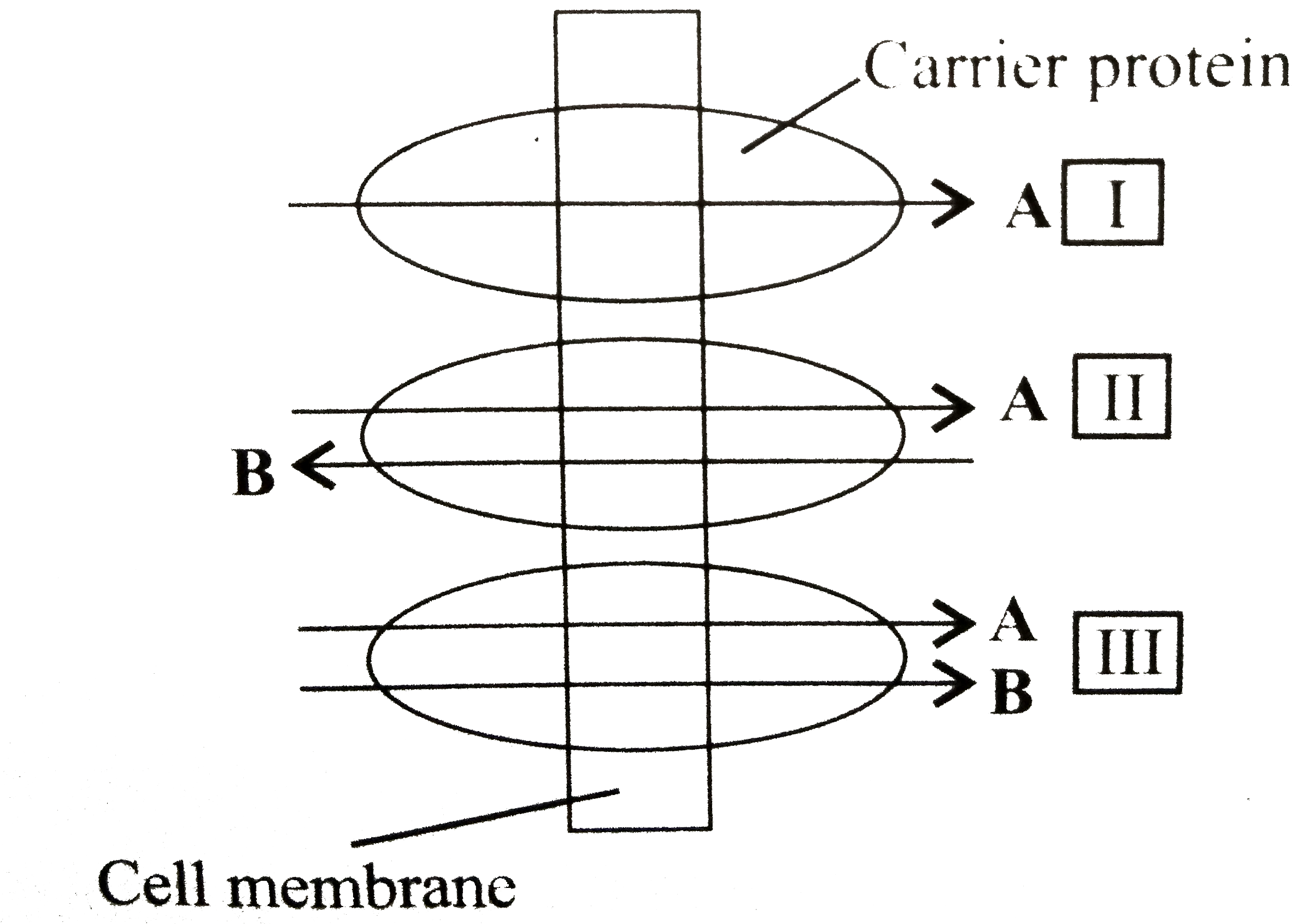Discuss the process of facilitated diffusion.
Step-by-Step Solution for the Process of Facilitated Diffusion
1. Definition of Facilitated Diffusion:
Facilitated diffusion is a type of passive transport that allows substances to cross membranes with the assistance of special proteins. Unlike simple diffusion, which does not require proteins, facilitated diffusion relies on specific membrane proteins to help transport molecules.
Hint: Remember that facilitated diffusion is a passive process, meaning it does not require energy.
2. Mechanism of Transport:
In facilitated diffusion, substances move along their concentration gradient, meaning they travel from an area of higher concentration to an area of lower concentration. This movement occurs without the input of energy (ATP).
Hint: Concentration gradient is key; think about how substances naturally flow from high to low concentration.
3. Role of Membrane Proteins:
The proteins involved in facilitated diffusion can be classified into two main types: channel proteins and carrier proteins. Channel proteins form pores in the membrane that allow specific molecules to pass through, while carrier proteins bind to the substance and change shape to shuttle it across the membrane.
Hint: Visualize the proteins as "gates" or "transporters" that help substances enter or exit the cell.
4. Saturation of Transporters:
The transport rate during facilitated diffusion can reach a maximum when all available protein transporters are occupied. This phenomenon is known as saturation. Once saturation occurs, no additional increase in transport rate can be achieved, even if the concentration gradient increases.
Hint: Think of a busy highway; once all lanes are filled with cars, adding more cars doesn’t increase traffic speed.
5. Specificity of Facilitated Diffusion:
Facilitated diffusion is highly specific, meaning that each type of transporter protein is selective for particular substances. This selectivity allows cells to control which molecules are taken up or expelled.
Hint: Consider how a key fits into a lock; only the right key (or protein) can open the door for certain substances.
6. Sensitivity to Inhibitors:
The process of facilitated diffusion can be affected by inhibitors that interact with the protein side chains. These inhibitors can block the function of the transport proteins, thus affecting the transport of substances across the membrane.
Hint: Think of inhibitors as "roadblocks" that prevent the transport proteins from doing their job.
Summary
Facilitated diffusion is a crucial mechanism in cellular transport, allowing specific molecules to enter or exit cells without energy expenditure, utilizing specialized proteins, and exhibiting characteristics like saturation and specificity.
Facilitated diffusion is a type of passive transport that allows substances to cross membranes with the assistance of special proteins. Unlike simple diffusion, which does not require proteins, facilitated diffusion relies on specific membrane proteins to help transport molecules.
In facilitated diffusion, substances move along their concentration gradient, meaning they travel from an area of higher concentration to an area of lower concentration. This movement occurs without the input of energy (ATP).
The proteins involved in facilitated diffusion can be classified into two main types: channel proteins and carrier proteins. Channel proteins form pores in the membrane that allow specific molecules to pass through, while carrier proteins bind to the substance and change shape to shuttle it across the membrane.
The transport rate during facilitated diffusion can reach a maximum when all available protein transporters are occupied. This phenomenon is known as saturation. Once saturation occurs, no additional increase in transport rate can be achieved, even if the concentration gradient increases.
Facilitated diffusion is highly specific, meaning that each type of transporter protein is selective for particular substances. This selectivity allows cells to control which molecules are taken up or expelled.
The process of facilitated diffusion can be affected by inhibitors that interact with the protein side chains. These inhibitors can block the function of the transport proteins, thus affecting the transport of substances across the membrane.
Facilitated diffusion is a crucial mechanism in cellular transport, allowing specific molecules to enter or exit cells without energy expenditure, utilizing specialized proteins, and exhibiting characteristics like saturation and specificity.
Topper's Solved these Questions
- TRANSPORT IN PLANTSBOOK - MODERN PUBLICATIONCHAPTER - TRANSPORT IN PLANTSEXERCISE - COMPETITION FILE (MULTIPLE CHOICE QUESTIONS)
68 Videos
- TRANSPORT IN PLANTSBOOK - MODERN PUBLICATIONCHAPTER - TRANSPORT IN PLANTSEXERCISE - COMPETITION FILE (MATCHING THE QUESTIONS :)
1 Videos
- TRANSPORT IN PLANTSBOOK - MODERN PUBLICATIONCHAPTER - TRANSPORT IN PLANTSEXERCISE - REVISION EXERCISES (SHORT ANSWER QUESTIONS)
36 Videos
- THE LIVING WORLDBOOK - MODERN PUBLICATIONCHAPTER - THE LIVING WORLDEXERCISE - Chapter Practice Test
16 Videos
Similar Questions
Knowledge Check
In facilitated diffusion
Athe hydrolysis of ATP is required to facilitate diffusionBspecific substances are transported against their concentration gradient.Cmembrane phospholipids create a channel that permits diffusion of a specific substanceDa membrane protein binds to specific solute and then undergoes a conformational change.What is correet about the movement of substance across the membrane in facilitated diffusion?
Ait is an active transportBit cause transport of molecules from low concentration to high concentrationCit is insensitive to inhibitorsDit is a very specific transportThe given figure shows transport of two molecules A and B through three different modes of facilitated diffusion. Select the correct option regarding it.
 AIIIIII(a)UniportSymportAntiportBIIIIII(a)UniportAntiportSymportCIIIIII(a)AntiportUniportSymportDIIIIII(a)AntiportSymportUniport
AIIIIII(a)UniportSymportAntiportBIIIIII(a)UniportAntiportSymportCIIIIII(a)AntiportUniportSymportDIIIIII(a)AntiportSymportUniport
What is facilitated diffusion ?
View SolutionFrom the given figrue of facilitated diffusion identify I,II,III and IV

View SolutionWhat are different factors which affect rate of facilitated diffusion?
View SolutionAssertion :- Energy is not required to pump protons from stroma to lumen.
Reason :- Movement of protons from stroma to lumen is carried out through facilitated diffusion
View SolutionAssertion: Glucose is absorbed by either simple diffusion or active transport.
Reason: Amino acids are absorbed by either simple diffusion, facilitated diffusion or active transport.
View Solution
